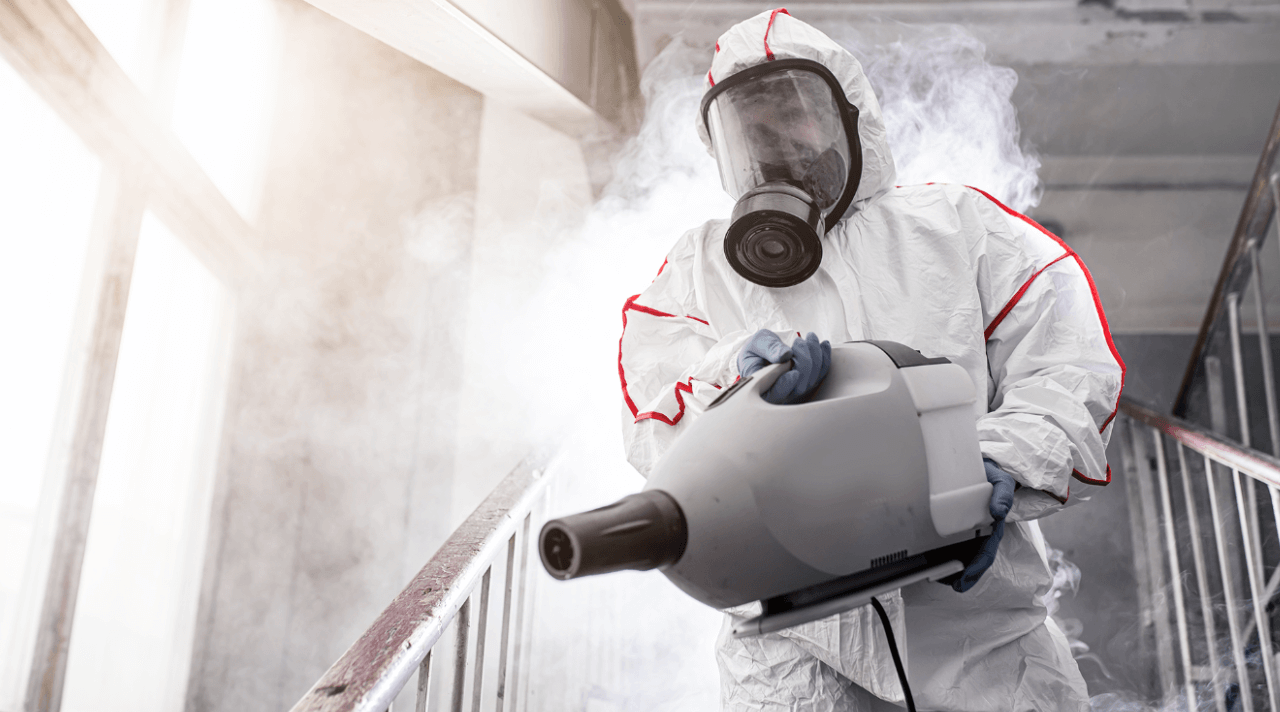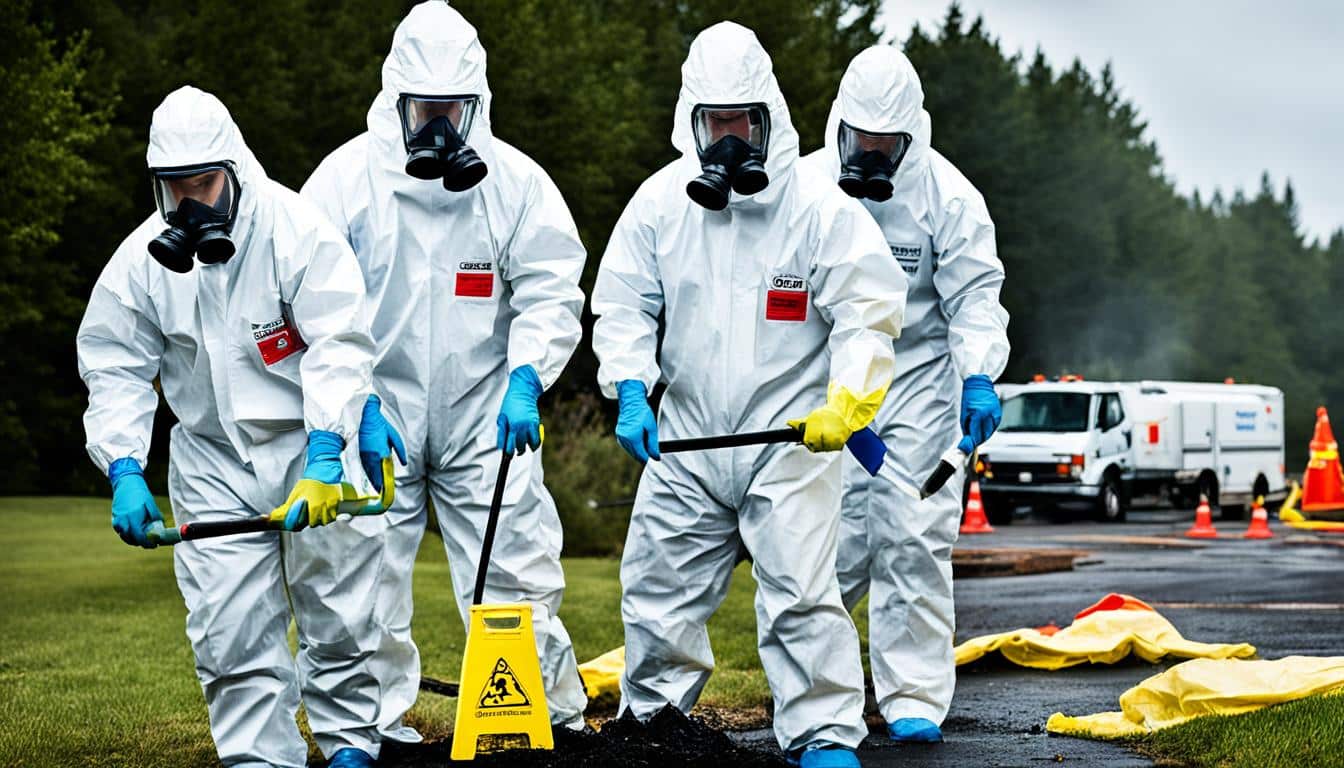Biohazard Removal: Safe Handling and Disposal of Hazardous Materials
Biohazard Removal: Safe Handling and Disposal of Hazardous Materials
Blog Article
Specialist Biohazard Cleansing and Purification for Blood, Bodily Fluids, and Hazardous Products
The possible health dangers linked with exposure to biohazards highlight the crucial requirement for meticulous handling and complete cleanup. As we navigate the detailed landscape of biohazard cleanup, comprehending the subtleties of laws, compliance, and the specific tools at play comes to be crucial in guaranteeing a comprehensive and risk-free purification procedure.
Health Risks of Biohazard Exposure
Exposure to biohazards positions considerable wellness threats that can result in severe consequences for communities and individuals alike. Biohazards encompass a large range of biological compounds, consisting of blood, physical liquids, mold and mildew, germs, viruses, and other potentially contagious materials. When individuals come into contact with these biohazards, whether through accidents, improper handling, or environmental exposure, they encounter the danger of having major illnesses or diseases.
One of the main wellness threats related to biohazard direct exposure is the transmission of infectious conditions. Bloodborne microorganisms such as HIV, liver disease B and C, and different germs can be present in biohazardous materials, posturing a direct hazard to human health and wellness. Breathing in air-borne biohazards like mold and mildew spores or entering contact with contaminated surfaces can likewise result in respiratory concerns, allergic reactions, and other adverse wellness results.
In addition, biohazard exposure can have long-term health effects, with some illness manifesting years after the first get in touch with (Blood Cleanup). As a result, it is essential to focus on appropriate biohazard cleansing and purification to minimize these health threats and make sure the safety and security of people and neighborhoods

Specialized Educating for Biohazard Clean-up
When it involves handling biohazard clean-up successfully and securely, specialized training plays an essential duty in guaranteeing appropriate purification treatments are followed. Biohazard cleanup needs details expertise and skills to efficiently alleviate dangers related to bloodborne virus, bodily fluids, and dangerous materials. Experts trained in biohazard cleaning undertake strenuous instruction on exactly how to safely manage, eliminate, and dispose of biohazardous materials to stop contamination and exposure.
Specialized training for biohazard clean-up covers a variety of vital topics, consisting of correct personal safety tools (PPE) use, bloodborne virus recognition, purification strategies, and contaminated materials disposal procedures. People trained in biohazard cleanup are geared up with the essential competence to evaluate contamination levels, identify prospective dangers, and carry out suitable cleanup treatments in conformity with regulatory requirements.
Continuous training and education are paramount in the area of biohazard clean-up to stay upgraded on the current purification technologies, safety and security protocols, and regulations. By spending in specialized training, biohazard clean-up professionals can effectively react to emergency situation cleanup scenarios and protect both public health and wellness and the environment.
Relevance of Appropriate Decontamination Methods
Utilizing correct decontamination strategies is critical in biohazard cleaning to successfully get rid of hazardous products and minimize wellness risks. Reliable decontamination not just makes sure the removal of noticeable traces of blood, physical fluids, and various other biohazards however additionally targets unnoticeable virus that may posture major wellness hazards if not effectively eliminated. By adhering to strict purification protocols, educated specialists can dramatically minimize the risk of direct exposure to hazardous microorganisms, infections, and microorganisms that could cause illness or infections.
Correct decontamination methods entail the use of customized devices and anti-bacterials that are specifically designed to counteract biohazards effectively. Extensive cleaning and sanitation of infected locations are important to prevent the spread of pathogens and guarantee a risk-free atmosphere for owners. In addition, the proper disposal of biohazardous waste following decontamination procedures is vital in avoiding contamination of various other surface areas or check that people.

Devices and Tools for Safe Cleaning
The correct devices and tools play an essential duty in making sure the risk-free and effective cleanup of biohazardous products. When taking care of blood, bodily liquids, or dangerous materials, biohazard cleansing experts rely upon specialized equipment to reduce exposure dangers and completely sanitize the afflicted area. Individual protective tools (PPE) such as gloves, coveralls, masks, and safety glasses are important to secure against straight contact with possibly infectious products. Additionally, biohazard cleansing kits having disinfectants, absorptive materials, and biohazard bags are utilized to securely dispose and consist of of contaminated products. Blood Cleanup.
Advanced cleansing devices like hospital-grade disinfectants, HEPA-filtered vacuums, and fogging makers are used to sanitize surfaces and eliminate biohazards properly. Specialized equipment such as sharps containers and biohazard waste disposal bins are used to securely take care of sharp items and biohazardous waste materials. By utilizing the best tools and tools, biohazard cleansing specialists can guarantee a thorough clean-up process that prioritizes safety and security and minimizes health risks for both workers and residents of the damaged room.
Rules and Compliance in Biohazard Cleansing
Correct adherence to regulations and conformity criteria is paramount in biohazard cleaning to ensure the safety of both home employees and the setting. Federal government companies such as OSHA (Occupational Security and Health And Wellness Administration) and the EPA (Epa) have developed details standards for biohazard clean-up procedures to minimize wellness threats and ecological contamination. These guidelines cover a variety of aspects including the handling, transport, and disposal of biohazardous products, in addition to the required training and safety tools required for workers associated with the cleanup process.
Biohazard cleansing business have to remain updated with these laws to guarantee that their operations fulfill the needed safety criteria. Failure to adhere to these regulations can cause severe consequences, consisting of fines, lawful action, and jeopardizing the health and wellness of individuals and the atmosphere. By following rigorous policies and conformity procedures, biohazard cleansing business can effectively minimize risks and ensure a safe and complete cleanup procedure for all parties included.
Verdict
To conclude, biohazard cleansing and decontamination call for specialized training, appropriate strategies, and adherence to policies. Direct exposure to blood, physical fluids, and unsafe materials presents substantial health risks, making it critical to use the ideal tools and devices for safe clean-up. By adhering to rigorous protocols and guidelines, experts can properly mitigate the risks connected with biohazard direct exposure and ensure the safety of both themselves and others.
As we navigate the detailed landscape of biohazard cleaning, understanding the nuances of policies, compliance, and the specific devices advice at play comes to be necessary in ensuring a safe and complete purification procedure. (Blood Cleanup)
When it comes to taking care of biohazard cleaning successfully and securely, specialized training plays a basic role in ensuring proper decontamination procedures are followed.Making use of correct decontamination methods is important in biohazard clean-up to efficiently get rid of dangerous materials and reduce wellness dangers. Furthermore, biohazard cleansing kits having anti-bacterials, absorptive materials, and biohazard bags are used to securely dispose and contain of infected products.
Government agencies such as OSHA (Occupational Safety And Security and Health And Wellness Administration) and the EPA (Environmental Security Agency) have actually developed particular standards for biohazard clean-up procedures to decrease health and wellness risks and ecological contamination.
Report this page